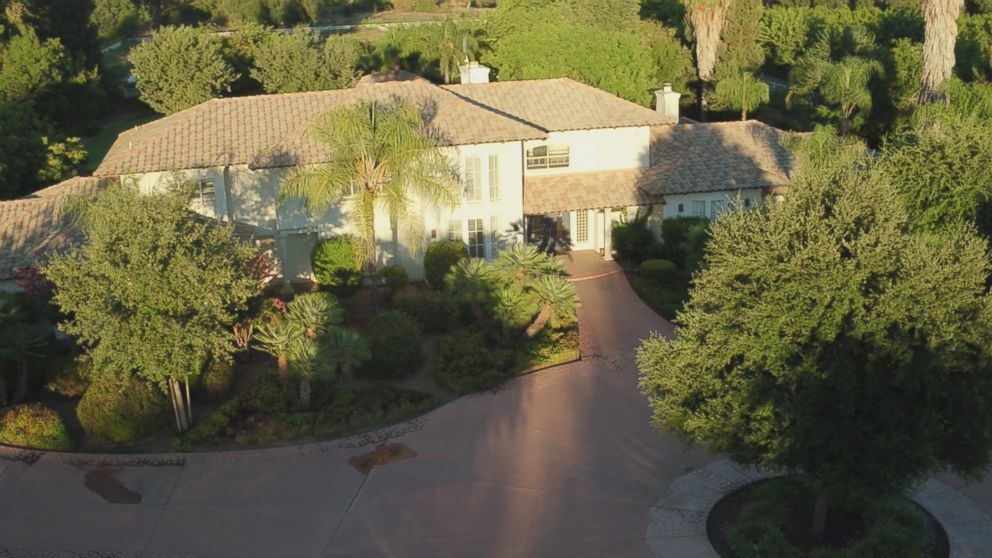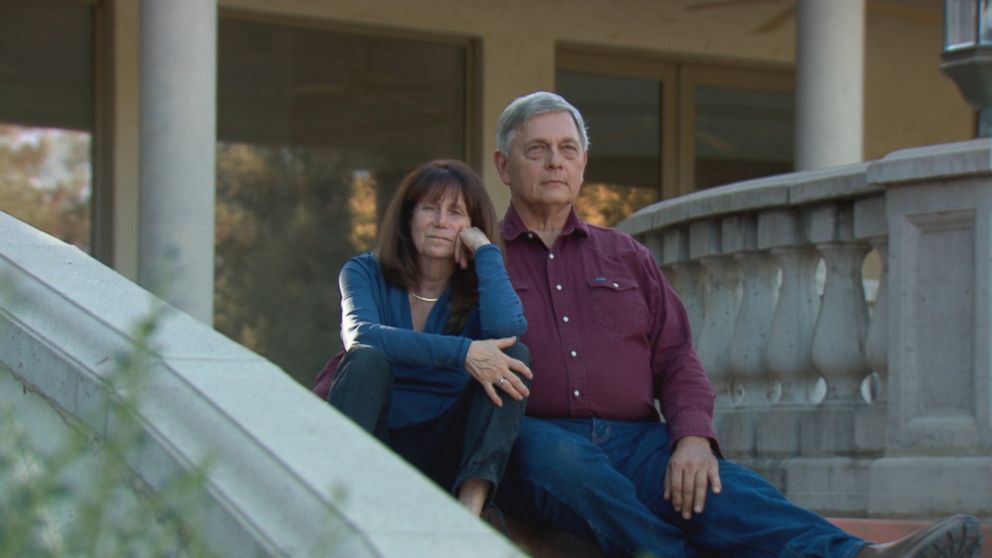How Woman Who Pretended to Be French Nobility and Faked Own Death Was Exposed
Genevieve de Montremare’s name is as impressive as her fairy tale upbringing.
— -- Genevieve de Montremare told the world she’d been born into the Rochechouart family, one of the oldest noble families in France that dates back to the 1800s.
She said she was educated at some of the finest European schools, earning a medical degree and a doctorate in genetics. In the early 1990s, de Montremare made her presence known in Fresno, California.
In 1991, she married Dr. Michael Weilert, a pathologist and managing partner of a medical lab in the area.
The couple had a daughter and eventually settled on a 15-acre property, where they had a barn filled with a very expensive and rare breed of horses called Friesians. She became a fixture in the tight-knit Friesian scene.
“She was a legend amongst the Friesian community. She was a geneticist. She was revolutionizing for Friesians in America. You were star struck,” Katelyn Sweigart, a Friesian breeder, told “20/20.”
Cheryl Skigin and her husband Brian Gwartz had a lifelong love of horses, including Friesians, and Skigin said she was eager to chat with de Montremare.
“I think she exuded tremendous influence,” Skigin told “20/20.”
“You would hear about her family jet,” Gwartz told “20/20.”
In the Friesian world, de Montremare was famous for her lavish Friesian horse events.
“She would have a huge catered lunch on the tennis courts and a beautiful covered arena,” Michelle Sweigart said. “It was just spectacular.”
“Oh my gosh, they were great,” Nina Miller, Friesian breeder and owner of Checkerboard Farms, told “20/20.” “She had a beautiful home.”

According to those that knew her, de Montremare herself was somewhat of a recluse. She told people she was battling leukemia, and, on the rare occasions she was seen, friends say she was almost always carrying an IV.
“[She said] that she was dying of leukemia, that she didn’t know how long she had,” Miller said. “I saw her twice [over 10 years], and I think that’s more than most people have.”
Despite de Montremare’s few social interactions, Miller said that de Montremare had other issues.
“She could hurt you. She could hurt you emotionally. She could hurt you financially, and she was mean,” Miller said. “I did something that upset her, and at that point, I was supposedly not allowed on her property. She could make a lot of people mad at you.”
However, in late 2007, friends learned that de Montremare had succumbed to her illness.
“They dedicated the National Show to her! I mean, you know, she was like a heroine,” Skigin said.
“People were devastated,” Michelle Sweigart said.
Her obituary called her the “Matriarch of the Friesian community,” and her French death certificate circulated among the grieving horse community.
Saying he was distraught over the death of his wife, Michael Weilert put up their property for sale with an asking price of $2.3 million.
Skigin and Gwartz were in the market for a property for their horses and were interested in buying the home. They say Weilert was visibly upset over his wife’s death.

“He stood … in front of the front door with us and actually cried over his wife’s death,” said Gwartz.
“When he showed us his property, he would point and say, ‘Every spot here is like a grave marker for the person who isn’t here and designed all of this,’” Skigin said.
The couple said they noticed a few structural issues with the arena and the barn, but that Weilert assured them that everything would be fixed up before the sale.
In May 2009, the sale went through, but Skigin and Gwartz said they uncovered serious structural problems that they estimated would cost at least $800,000 to fix.
“And the minute we actually confronted [Weilert] with that, it was, ‘You’ll have to speak to my lawyer,’” Skigin said.
In preparation for their lawsuit, they said they came across something startling: de Montremare’s signature was on the deed to the property and dated March 20, 2008 -- almost four months after she died.
“I was flabbergasted. I couldn’t breathe for a second. It was just unbelievable,” said Gwartz.
“We thought the deed was forged, and then we got a hold of the notary, found out the deed was not forged because he remembered meeting Genevieve de Montremare,” Skigin said laughing. “You know, it was just unbelievable.”
Skigin and Gwartz dug deeper and found that de Montremare was previously married to a man named Gary Hoffman. He revealed her other big secret: de Montremare was never of French royal ancestry.
Hoffman said his ex-wife’s former name is Genevieve Sanders. Sanders was an all-American girl from Lindsay, California, and the daughter of a farmer. And she didn’t have any of the fancy degrees she claimed to have.
Hoffman met her while she was a student at Fresno State University, and he was a teaching assistant.
“First impression: beautiful, young lady, very smart, the kind of person that, ‘Hey, I’d like to get to know her,’” Hoffman told “20/20.”
Two years after Hoffman and Sanders married, they lived on a tight budget with Sanders working as a waitress.
The closest Sanders came to royalty was when she won the National Raisin Queen beauty pageant in 1986.
“She enjoyed that little ... taste of low level celebrity she had. She could sort of see how this could be transformed to something else,” Hoffman recalled.
Hoffman said Sanders started adopting a French accent while waiting tables at a restaurant in Fresno.
“I thought it was kind of funny. At home, she would get in front of the mirror and say a few words. I just became to think that it was reinforced. It was rewarded. It was something that people liked to talk to her. She became that much more interesting,” he said.
After adopting the accent, Sanders got bigger tips at work, and soon, she began pretending to be of French heritage at all times, even at home. Hoffman filed for divorced in 1990.
And in 1991, Sanders petitioned the court to change her name to Genevieve Marie de Montremare.
Skigin and Gwartz filed a lawsuit claiming they were defrauded by de Montremare and her husband, who they say cashed in on de Montremare’s French cachet to inflate the price of their property above market value.
Word spread quickly around the equestrian community of de Montremare’s true lineage and fake death.
“It spread like wildfire. It was basically, ‘I can’t believe it. I can’t believe it. I can’t believe it,’ and yet, it’s -- oh my God,” Miller said.
At the trial, the defense argued that Skigin and Gwartz purchased the property “as-is” and should have inspected it more closely.
Weilert admitted on the stand that he faked his wife’s death. He said she was suffering from a debilitating medical condition and wanted to be left alone.
After eight weeks, Skigin and Gwartz won their case, and Weilert and his wife were ordered to pay over $1.5 million in damages.
Today, de Montremare and Weilert are living in a modest home in Clovis, California. They turned down a request for an on-camera interview with “20/20,” but de Montremare sent a message on Facebook saying her “health issues are very real and punishing” and that her fake French identity was simply “an internet persona [she] made up and then ended.”
“If she had an illness, I would feel compassion for her having the illness, because it’s a terrible thing when people suffer. But having an illness doesn’t excuse fraud and deceit,” Gwartz said.
“Stand on your own two feet, and apologize to all the people that you hurt,” Skigin said.